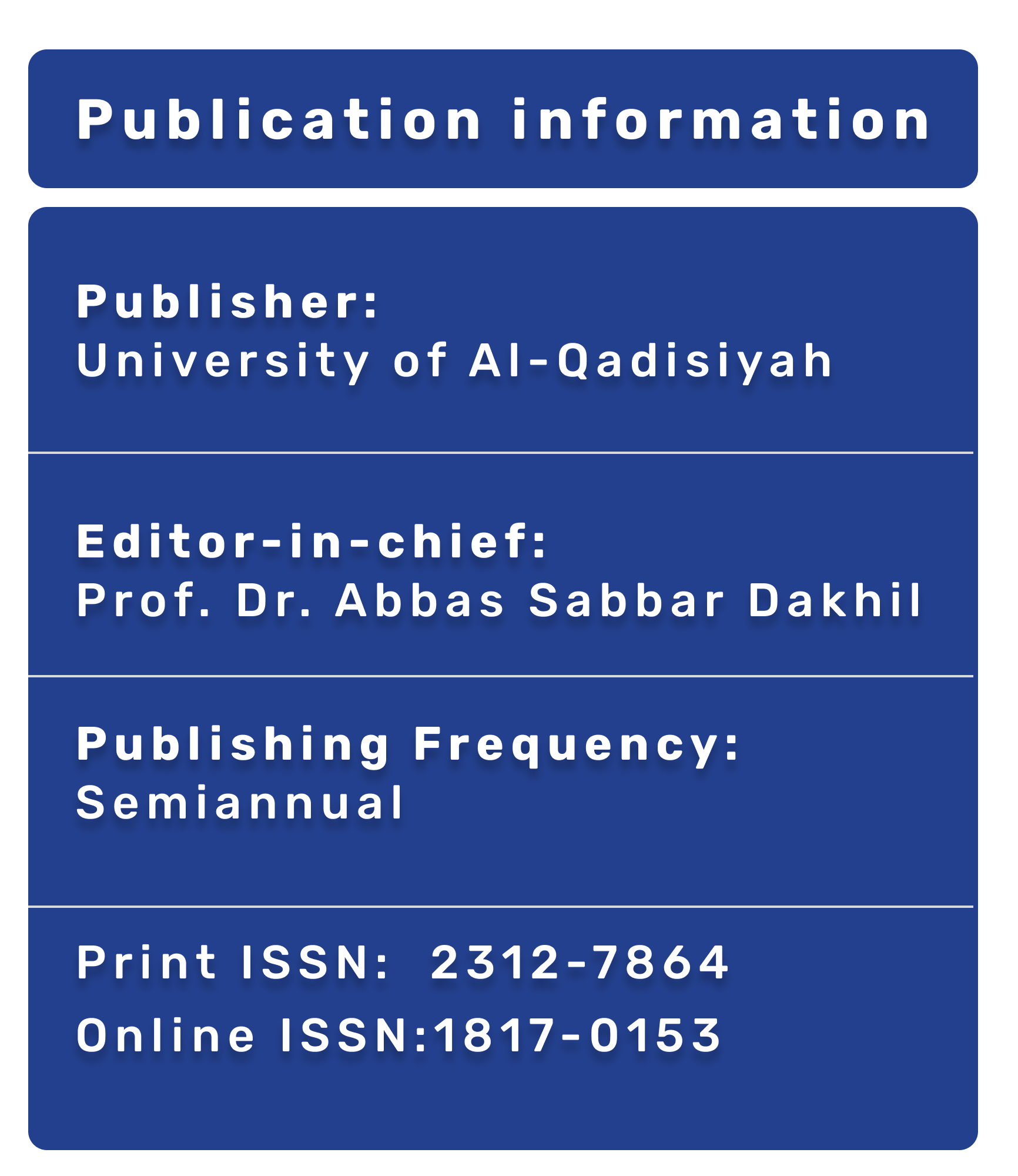Estimation of serum electrolytes and renal function in patients with kidney failure in Mosul city
Estimation of serum electrolytes and renal function in patients with kidney failure
DOI:
https://doi.org/10.28922/qmj.v21i1.892Keywords:
Electrolytes, renal function, kidney failure, dialysis.Abstract
Background: Renal failure, additionally referred to as kidney failure, is an illness in which the kidneys are unable to filter bodily waste from the circulation. This can cause an accumulation of harmful substances and the electrolytes in the human body, which can result in a variety of unpleasant side effects. Electrolytes are minerals that are essential for proper body function, including maintaining fluid balance, regulating nerve and muscle function, and supporting heart health. Imbalances in electrolyte levels can occur in individuals with kidney failure due to the kidneys' inability to regulate electrolyte levels properly. Objectives: The purpose of this study is to determine the approximate levels of chloride, sodium, potassium, calcium, and magnesium in individuals with kidney failure. Materials and methods: 50 dialysis patients from Ibn Sina Teaching Hospital/Dialysis Unit in Al-Mosul, Iraq, aged 18–77, were studied from October 2021 to January 2022. Controls were 50 physically healthy people. They were 19–75. Blood sampling and biochemical analysis were performed. Results: This study examined the differences in age, and gender groups and electrolyte levels between individuals with kidney failure and healthy controls. The findings revealed no statistically significant differences in age and gender distribution between cases and controls. However, observable differences were significant in the levels of electrolytes between cases and controls, with increased levels of potassium, magnesium, and phosphate and decreased levels of sodium, calcium, and chloride in individuals with kidney failure. Conclusion: This study suggests that regular monitoring of electrolyte levels and implementing interventions to correct electrolyte imbalances, as well as early detection and management of kidney disease, may help prevent the progression of kidney failure. Further study is required to investigate the relationship between electrolyte imbalances and kidney disease in further explanation.
References
National Institute of Diabetes and Digestive and Kidney Diseases. Retrieved 11 November 2017.
Meersch M, Schmidt C, Zarbock A. ‘Patient with chronic renal failure undergoing surgery’, Current opinion in anaesthesiology, 2016;29(3):413–420.
Hilton R. ‘Defining acute renal failure’, CMAJ, 2011;183(10):1167–1169.
Vaidya SR, Aeddula NR. Chronic Renal Failure. (Updated 2022 Oct 24). In: StatPearls (Internet). Treasure Island (FL): StatPearls Publishing; 2023 Jan-. Available from: https://www.ncbi.nlm.nih.gov/books/NBK535404/
Jankowski J, Floege J, Fliser D, Böhm M, Marx N. Cardiovascular disease in chronic kidney disease: Pathophysiological insights and therapeutic options. Circulation 2021;143:1157–1172. (CrossRef) (PubMed)
Naicker, S. Burden of end-stage renal disease in sub-Saharan Africa. Clin. Nephrol. 2010, 74, S13–S16. (CrossRef) (PubMed)
Nataatmadja M, Evangelidis N, Manera KE, Cho Y, Johnson DW, Craig JC, Baumgart A, Hanson CS, Shen J, Guha C. Perspectives on mental health among patients receiving dialysis. Nephrol. Dial. Transplant. 2021;36:1317–1325. (CrossRef) (PubMed)
Rota-Musoll L, Subirana-Casacuberta M, Oriol-Vila E, Homs-Del Valle M, Molina-Robles E, Brigidi S. The experience of donating and receiving a kidney: A systematic review of qualitative studies. J. Ren. Care 2020;46:169–184. (CrossRef)
Balc? AK, Koksal O, Ataman Kose EA, Ozdemir F, Inal T, Oner N. General characteristics of patients with electrolyte imbalance admitted to emergency department. World J Emerg Med. 2013;4:113–116.
Ullah K, Butt G, Masroor I, Kanwal K, Kifayat F. Epidemiology of chronic kidney disease in a pakistani population. Saudi J Kidney Dis Transpl. 2015;26(6):1307
United States Renal Data System. 2020 USRDS Annual Data Report: Epidemiology of Kidney Disease in the United States. National Institutes of Health, National Institute of Diabetes and Digestive and Kidney Diseases, Bethesda, MD, 2020.
James MT, Hemmelgarn BR, Tonelli M. Early recognition and prevention of chronic kidney disease. Lancet. 2010;375(9722):1296–1309. doi:10.1016/S0140-6736(09)62004-1
Jha V, Garcia-Garcia G, Iseki K, et al. Chronic kidney disease: global dimension and perspectives. Lancet. 2013;382(9888):260–272. doi:10.1016/S0140-6736(13)60687-X
US Renal Data System. 2019 USRDS Annual Data Report: Epidemiology of Kidney Disease in the United States. National Institutes of Health, National Institute of Diabetes and Digestive and Kidney Diseases, Bethesda, MD, 2019.
Peralta CA, Katz R, Sarnak MJ, et al. Kidney function decline in the elderly: impact of lipoprotein-associated phospholipase A2. Am J Nephrol. 2012;35(4):345–353. doi:10.1159/000336736
Lee J, Kim DK, Park JB, et al. Age-dependent glomerular filtration rate decline in subjects without chronic kidney disease and risk factors. BMC Nephrol. 2015;16:36. doi:10.1186/s12882-015-0029-5
Keith DS, Nichols GA, Gullion CM, Brown JB, Smith DH. Longitudinal follow-up and outcomes among a population with chronic kidney disease in a large managed care organization. Arch Intern Med. 2004;164(6):659–663. doi:10.1001/archinte.164.6.659
Neugarten J, Acharya A, Silbiger SR. Effect of gender on the progression of nondiabetic renal disease: a meta-analysis. J Am Soc Nephrol. 2000;11(2):319–329. doi:10.1159/000336790
Peralta CA, Shlipak MG, Judd S, et al. Detection of chronic kidney disease with creatinine, cystatin C, and urine albumin-to-creatinine ratio and association with progression to end-stage renal disease and mortality. JAMA. 2011;305(15):1545–1552. doi:10.1001/jama.2011.468
Hallan S, de Mutsert R, Carlsen S, et al. Gender differences in the association of smoking and snuff use with end-stage renal disease: a case-control study. Int J Epidemiol. 2006;35(5):1353–1360. doi:10.1093/ije/dyl163
Soar J, Perkins GD, Abbas G, Alfonzo A, Barelli A, Bierens JJ, Brugger H, Deakin CD, Dunning J, Georgiou M, Handley AJ, Lockey DJ, Paal P, Sandroni C, Thies KC, Zideman DA, Nolan JP. "European Resuscitation Council Guidelines for Resuscitation 2010 Section 8. Cardiac arrest in special circumstances: Electrolyte abnormalities, poisoning, drowning, accidental hypothermia, hyperthermia, asthma, anaphylaxis, cardiac surgery, trauma, pregnancy, electrocution". Resuscitation. 2010;81(10):1400–33.
Fong J, Khan A. "Hypocalcemia: updates in diagnosis and management for primary care". Canadian Family Physician. 2012;58(2):158–62. PMC 3279267. PMID 22439169.
Lewis GF, Rader DJ. "New insights into the regulation of HDL metabolism and reverse cholesterol transport". Circulation Research. 2005;96(12):1221–32. doi:10.1161/01.RES.0000170946.56981.5c. PMID 15976321. S2CID 2050414.
Braun L, Cohen M. Herbs and Natural Supplements, an evidence based guide, 2nd Edition, Elsevier, 2007, Iron Monograph (pages 434-442)
Vassalotti JA, Stevens LA, Levey AS. Testing for chronic kidney disease: a position statement from the National Kidney Foundation. Am J Kidney Dis. 2007;50(2):169–80. doi: 10.1053/j.ajkd.2007.06.013. PMID: 17660017.
"Definition of Magnesium Deficiency". MedicineNet.com. Retrieved 31 May 2014.
Ostermann M., Joannidis M. Acute kidney injury 2016: diagnosis and diagnostic workup. Critical care (London, England), 2016;20(1),299. https://doi.org/10.1186/s13054-016-1478-z
Meyer TW, Hostetter TH. "Uremia". The New England Journal of Medicine. 2007;357(13):1316–25. doi:10.1056/NEJMra071313. PMID 17898101.
"Hypophosphatemia". Merck Manuals Professional Edition. Retrieved 28 October 2018.
"Creatinine tests - Mayo Clinic". www.mayoclinic.org. Archived from the original on 2019-08-03.
Lewis SL, Bucher L, Heitkemper MM, Harding MM, Kwong J, Roberts D (September 2016). Medical-surgical nursing : assessment and management of clinical problems (10th ed.). St. Louis, Missouri: Elsevier Health Sciences. p. 1025. ISBN 978-0-323-37143-8. OCLC 228373703.
Allen PJ. "Creatine metabolism and psychiatric disorders: Does creatine supplementation have therapeutic value?". Neuroscience and Biobehavioral Reviews. May;36(5):1442–62. doi:10.1016/j.neubiorev.2012.03.005. PMC 3340488. PMID 22465051.
Samra M, Abcar AC. "False estimates of elevated creatinine". The Permanente Journal. 2012;16(2):51–2. doi:10.7812/tpp/11-121. PMC 3383162. PMID 22745616
Bishop, M.L.; Fody, E.P.; Schoeff, L.E. (2010). Clinical Chemistry: Techniques, Principles, Correlations (6th ed.). Lippincott Williams and Wilkins. p. 268. ISBN 9780781790451.
Burtis, C.A.; Ashwood, E.R.; Bruns, D.E. Tietz (2006). Textbook of Clinical Chemistry and Molecular Diagnostics (5th ed.). Elsevier Saunders. p. 1554. ISBN 9780721601892.
Babitt Jodie L, Lin Herbert Y. Mechanisms of Anemia in CKD. Journal of the American Society of Nephrology, 2012;23(10):1631–1634. DOI: 10.1681/ASN.2011111078








